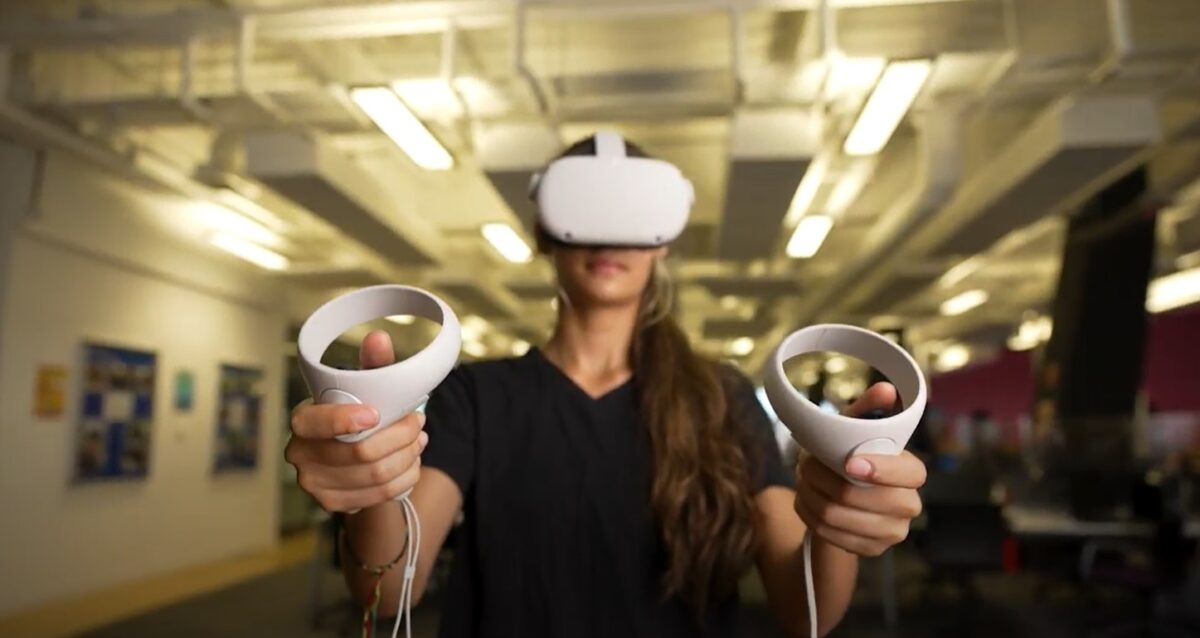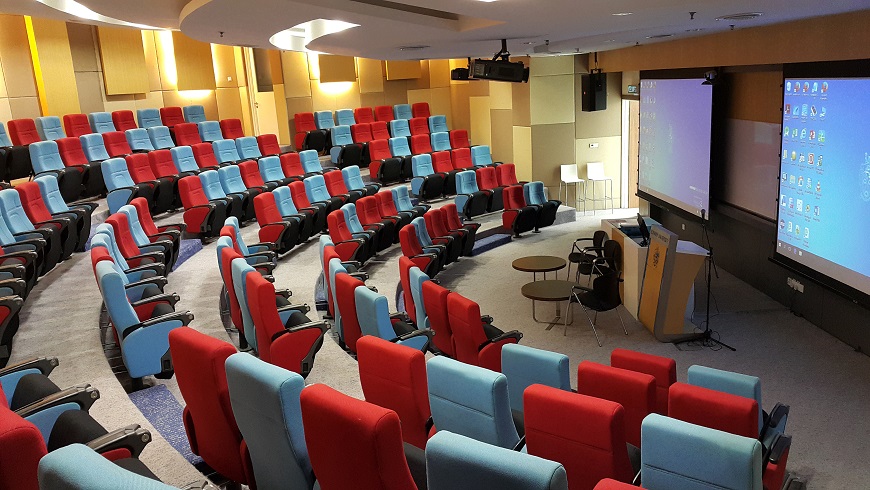The Evolution of Higher Education: How VR Is Changing The Game

Disover the four key trends that we’re likely to see in post-pandemic education.
When the COVID-19 pandemic first hit, it forced the entire higher education field to reinvent the way we teach and innovate. Even prior to the pandemic, educators were already beginning to reassess teaching methods and make changes that fit our modern economy.
The World Economic Forum recently noted four key trends that we’re likely to see in higher education post-pandemic. Let’s take a look at each of these trends and how immersive learning plays into the changing landscape of higher education.
1. Learning From Everywhere
Pre-pandemic, many educators thought that learning was limited to specific environments. When the initial shutdown hit, higher learning institutions were forced to consider new teaching strategies that aren’t dependent on everyone being in the same place. Video conferencing programs and other technologies have made it easier for instructors to create immersive lessons regardless of where students are located.

For the WEF, learning from everywhere means “allowing for truly immersive and experiential learning, enabling students to apply concepts learned in the classroom out in the real world.” This is where virtual reality and other immersive technologies can help create a more engaging remote experience for students.
In the early days of remote learning, many students found the process challenging. Not only did they miss the hands-on learning that happens inside a classroom, but they also missed the social interaction that comes with being on a college campus.
VR technology could address these problems in future remote learning setups. Classes given entirely in VR provide students with hands-on learning opportunities while minimizing digital distractions. Higher education could take this a step further by providing virtual campuses, which replicates the college experience digitally for students.
It will likely take time before virtual reality is adopted en masse in higher education. This is because both the software infrastructure and the human infrastructure is not there yet to support VR classes on a large scale. The software is still in its early stages, and we’re still learning the extent of what we can do with VR and education.
Additionally, curriculums have not yet been developed in a way that is conducive to VR. Until these curriculums are developed, it will be tricky to convince higher learning institutions to make the switch to VR education in the near future.
2. Replacing Lectures With Active Learning
While lectures were the norm for decades in higher education, recent developments have indicated that there are more effective ways of developing skills and knowledge. While lectures are easy and cost-effective to set up, they aren’t particularly engaging for students.
Lectures have also lost a lot of their value now that students have access to the internet. When students want to learn something new, all they have to do is go online and look it up via a search engine. There are also plenty of educational videos available on platforms like YouTube.
In order to justify the price of college education, universities had to move away from these lectures and offer active learning that provides more value. E-learning through textbooks, videos, and other traditional methods can still work well in some scenarios, but ideally, they will be supplemented with more immersive learning options.
This is particularly important for learning soft skills and other on-the-job skills that will carry over into students’ careers. VR learning is a tool that educators can use to add more value to their lessons and keep students engaged. Whether it’s in a physical classroom or a remote one, VR empowers educators to incorporate hands-on exploration and practice into their lessons. However, VR shouldn’t be used as a replacement or a crutch for educators, but rather as a helpful supplement.
3. Teaching Skills That Remain Relevant In A Changing World
Technology is evolving at a speed that’s faster than we have ever seen. This presents a unique challenge for universities. How do we accurately prepare students for the workforce when new technology is constantly emerging? Right now, many students are learning how to use technologies in school, only to find them outdated once they actually start working.
In fact, only 41 percent of students and 11 percent of employers believe that students are appropriately prepared for the workforce. This necessitates a major shift in the way that higher education develops curriculums. Regardless of the job technology you are using, skills like communication, collaboration, and leadership can all make students more employable – and this is what we should be focused on.
This is where VR can help fill the experience gap. Bodyswaps and other VR solutions offers students the opportunity to practice skills like active listening, giving feedback, and conflict resolution. This gives students a realistic way to prepare for the workforce in a low-stakes environment. It’s a cost-efficient and results-oriented way for students to learn these skills quickly.
4. Using Formative Assessments Instead of High-Stakes Exams
The WEF has highlighted that traditional exams don’t often correlate with a student’s potential performance in the workplace. While exams have long been an integral part of education, they tend to indicate the knowledge a student has memorized, rather than how they would actually perform in real life. Additionally, exams are often biased towards students who have economic privilege.

VR learning presents a fascinating alternative to the traditional exam. Instead of having to memorize large chunks of information, students get to demonstrate how they would do in a professional setting. Think of it as a flight simulator for professional skills. VR can provide a more accurate and effective testing environment.
Additionally, VR programs collect a huge amount of data as they are running. Many VR programs also give students the ability to replay and watch their experiences. This gives them an opportunity to gather insights about their skills and behavior and actively make improvements.
Final Thoughts
The world of education is changing at a rapid pace, and VR technology can help educators better meet students’ needs. While VR education is still in its early stages, it has a huge amount of potential for the future. When used by trained educators, VR can effectively prepare students for the challenges of the modern workforce.
About the Author
Chris Mallet is Co-founder & CEO at Bodyswaps, an award winning soft skills training solution offering a library of VR and mobile simulations for management, diversity and employability training.











Responses